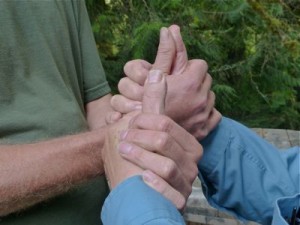Managing Your Energy, Part 17: Becoming Open to Love

Let’s talk about something before I continue my story: When we hear about especially positive experiences, some of us feel shame, inadequacy, longing, or even annoyance.
Almost all of us have issues about being included. Reading about my experiences of healing in group situations may bring up issues for some of you. Alienation, envy, feeling abandoned, etc. can arise when we hear about other people’s connections. If we would like to feel happy for them, we may feel confused if this discomfort comes up.
If someone has connections we long for we may become ensnared in preconceptions about other people’s relationships, recalling previous traumas and losses. Reactions and relationship issues usually originate with early family dynamics. As a teen or preteen, most of us also found trying to fit in painful. Feeling unwelcome in and unvalued by groups hurts.
Like a reflex, we learn to automatically exclude ourselves as a kind of self protection. Self protection isolates us more when we most want to connect. What is called for instead is careful discernment about WHICH groups and individuals to connect with. We also need self-connection and self-nurturing in group situations, and a compassionate sense of when to gently withdraw.
 It is my sincere hope that I can transmit a whiff of the healing experiences I’ve been going through, as I share them with you. I am including you!
It is my sincere hope that I can transmit a whiff of the healing experiences I’ve been going through, as I share them with you. I am including you!
If something comes up for you when you read about positive experiences, notice what arises. What do they ‘ping’ in you?
Welcome any discomfort and use it as a guide. The nature of your distress will give you clues as to what you need to heal.
Your distress calls out for sweetness and compassion.
Expanding our relationship to love helps extricate us from the mire caused by our histories. There are different types of love. As we open our hearts, we become more inclusive. We learn to allow ourselves to be open to love connections that have little to do with personality or personal relationships. Since our wounds are highly personal, we become open to sharing a Love that is more universal.
In inclusive and healthy spiritual groups, interaction may have little to do with personality. Love connections arise naturally, in the moment– usually without people seeking to secure it into their personal lives. We feel love and connection during an event, and sometimes an ongoing ‘heart connection’ that we enjoy if we see one another. We understand that this has little to do with relationship. We may ALSO develop friendships.
Personal connections take time–and involve karma. Relationships that involve a degree of binding exist for various purposes. They bring up and allow us to work with personality issues.
In spiritual work, the personality is a vehicle for development of the soul.
Those who attend inclusive spiritual events are not exempt from difficult feelings. Some feel intense after-event let-down. Some feel residual longing for heart connection in their daily lives, and feel frustrated in their relationships, or lack of the same.
How to open to love and deal with longing:
- Expand your ideas about what Love is. Acknowledge, recognize and enjoy love connections that are not personal. For example, savor a passing smile shared with a child.
- Notice love you feel for some strangers as you drive by. The more you let Love flow the more connected you will feel to life.
- Let your love have less to do with something personal and exclusive.
- Practice allowing yourself to give and receive love in total freedom, without attempting to create personal relationships unless they feel totally ‘right.’ The kind of love I am talking about does not create binding. It is not personal emotion as much as Cosmic Connection.
- Allow the energy of a loving event to carry forth into your life, using it to fuel any changes you need to make to be more open to love.
- Increase your awareness of people you love and respect with whom you are not in regular contact. Feel your hearts and spirits connecting through links of light that criss-cross the globe.
- Focus your longing for love into your spiritual life.
- Breathe in and out of your heart center.
- Seek to generate spiritual Love and bring it forth from yourself. As we learn to radiate it, we do not experience an absence.
Please feel free to share your thoughts and feelings about this topic.
What comes up for YOU and what do you do you to manage it?
WITH THAT MOON LANGUAGE
Admit something:
Everyone you see, you say to them, “Love me.”
Of course you do not do this out loud,
Otherwise someone would call the cops.
Still though, think about this, this great pull in us to connect.
Why not become the one who lives with a full moon
In each eye that is always saying,
With that sweet moon language,
What every other eye in this world
Is dying to hear?
Hafiz



















